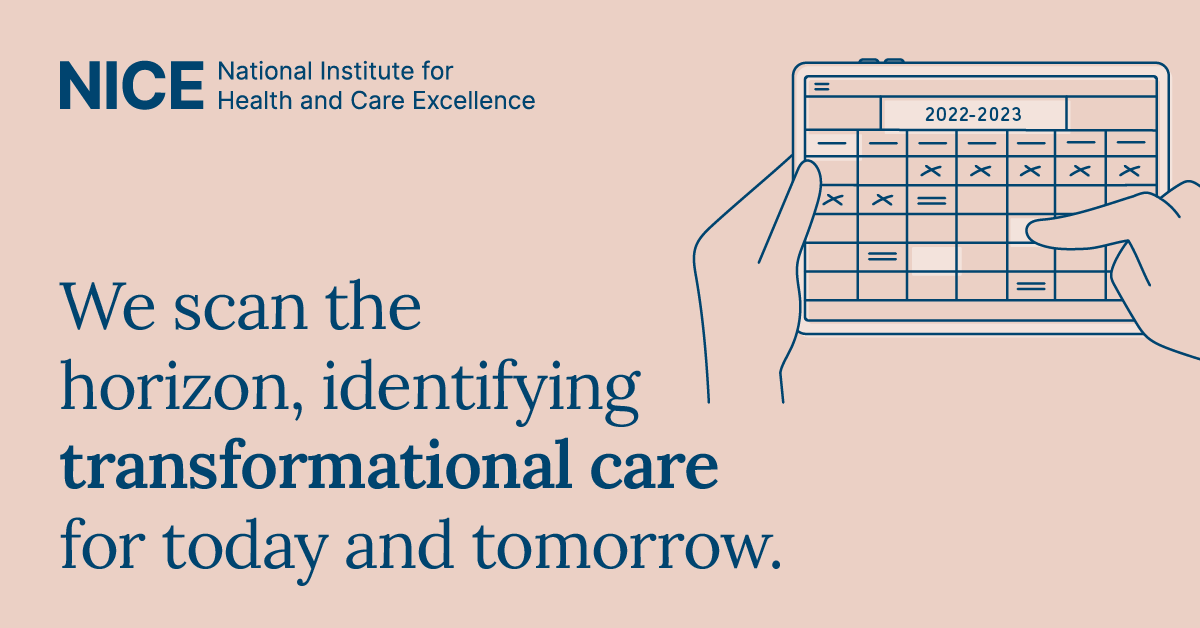Planning for the future
A resource impact case study


In this case study, we talk to Mohammed Asghar, prescribing governance lead at Frimley Health and Care Integrated Care System, and Carolyn Craven, prescribing support pharmacist at Cheshire and Merseyside Health and Care Partnership. Mohammed and Carolyn discuss our resource planning tools. They explain how they use them to help their local health and care system prepare, assessing the local impact of putting our guidance into practice.
“NICE’s resource planning tools give us advance notice of upcoming guidance. Rather than reacting to guidance publications, we can adopt a pro-active approach.”
Mohammed Asghar, prescribing governance lead, integrated care board, Frimley Health and Care Integrated Care System
“The NICE resource planner alerts us to the publication of final appraisal documents, giving us valuable time to put funding plans in place. This is particularly helpful for early access to medicines scheme products or for products appraised through the fast-track appraisal process. In these cases, we have just 30 days to make funding available.”
Carolyn Craven, prescribing support pharmacist – high-cost drugs lead (covering Cheshire), Cheshire and Merseyside Health and Care Partnership.
Our resource planning tools
Our resource planning tools detail published NICE guidance and topics planned for the future.
You can use them to:
- view upcoming guidance
- consider resource impact estimates for implementing upcoming guidance for the population in your local area
- understand the resource impact of published guidance.

Mohammed Asghar and Carolyn Craven
Mohammed Asghar and Carolyn Craven
A helpful resource
“The tools are so useful,” begins Mohammed. “NICE technology appraisals are a standing agenda item on both our drug and therapeutics committee and our integrated care system medicines board. For each appraisal, we assess the fiscal impact. The resource impact tools enable us to consider any local variance from the national estimates. This helps us to plan resource implications.”
Carolyn also uses NICE resource planning tools in her work. “I scan the NICE resource planner to see what’s coming through for high-cost drugs,” she explains. “I look at the resource impact reports, templates and statements. These detail the potential impact of guidance on our finances and other resources. I use these to update relevant groups including our area prescribing sub-group and our finance team.”

Cost savings and wider resource implications
Our resource planner highlights guidance that may generate cost savings or increase productivity. Applying these recommendations can free up resources and capacity that other services can use. “When NICE published its technology appraisal on romosozumab for treating severe osteoporosis, we looked at the potential cost implications,” Carolyn says. “But NICE’s resource planning tools also include information around savings from a reduction in patient fractures. I’m keen to use this aspect of the template. It will give us a better picture of the costs of the drug, considering potential savings to the whole health economy.”
As well as budgetary impact, the resource planner details the potential impact of guidance on other resources. These could include workforce, capacity and demand, infrastructure, training and education. A good example of this is when NICE recommended the PCSK9 inhibitors, alirocumab and evolocumab, for patients with primary hypercholesterolaemia or mixed dyslipidaemia. “Because of the resource planner’s forward timeline, we could agree the new pathway with our lipidologists and cardiologists before NICE had even published its final guidance,” Mohammed reveals.


Mohammed and Carolyn both subscribe to our resource impact monthly email digest.
Mohammed and Carolyn both subscribe to our resource impact monthly email digest.
Our resource impact monthly digest
The digest provides links to the latest resource planner, reports and templates. “The digest is really helpful,” says Carolyn. “Within my organisation, I cascade it to colleagues. It’s great for highlighting significant guidance, such as early access to medicines scheme products, where we have just 30 days to make funding available.”
NICE medicines and prescribing associates
Both Mohammed and Carolyn are NICE medicines and prescribing associates. Our associates collaborate with us to create a national community of practice for medicines optimisation. They work on medicines optimisation within their organisation and across their local health economy, supporting a wider network of professionals involved in medicines optimisation in their local areas.
“Being part of the NICE associate network has been invaluable to me,” enthuses Mohammed. “From face-to-face sessions to virtual events, the insight the network provides and being able to feed that back into the local system is fantastic.”
Carolyn agrees. “As a high-cost drugs lead, I’m the only person within my organisation who spends most of my time looking at the commissioning of these medicines. The associate network provides a useful forum to connect with others in similar jobs around the country.”

Find out more
If you’re responsible for planning, prioritising, purchasing and monitoring health, public health and social care services, we’re here to support you. By balancing best care with value for money, we can help you achieve the best health outcomes for the communities you serve.